This website is dedicated to aviation enthusiasts and plane spotters, but what is plane spotting?
Plane spotting is an interest in aeroplanes which is backed up by actively going out to identify, log, or photograph aircraft.
I have been a plane spotter since a young age. My father used to take me to the local airport where there was a viewing area on top of the terminal, and we could watch the planes come and go.
When I was around nine years old, I was bought a book called Civil Aircraft Markings, which listed every aircraft in the UK. It had lots of strange details, including what looked like codes, and identifications for each plane.
I soon learned that these were the registration or serial of the aeroplane, along with the type of aeroplane and who operated it.

An aircraft’s registration is usually written near the tail. You can find it and tick it off in a book or database. This is plane spotting!
These registrations or serials are written on each aircraft, usually near the tail.
Soon I was ticking off the planes I saw in the book whenever we went to the airport, or travelled on holiday. I did this by looking up the registration of the planes I saw and finding them in the book.
Later, I got hold of a camera with a zoom lens and started to take pictures when I went to the airport. They weren’t very good, and it was before digital cameras came about, but I loved taking pictures of planes both on the ground and in the air.
As I grew older and more independent, I started travelling all over the world to go plane spotting, flying on unusual aircraft and visiting some of the best and busiest airports.
For everyone, taking up plane spotting usually comes from an interest in aircraft or aviation, backed up with a desire to ‘collect’ or log that interest in some way, whether through logging registrations or taking pictures of the planes you see.
Different Types of Planes

The world of aviation is obviously huge, and covers both civil and military, as well as areas like general aviation (light aircraft), helicopters, and historic aircraft.
My particular interest lies in civil aircraft (airlines, cargo, biz jets and the like). This guide to plane spotting will focus on this aspect of plane spotting and aviation, but many of the principles are the same.
How to get started as a plane spotter
To get started as a plane spotter, you need some basic things.
- An interest in aircraft or aviation
- Some basic equipment
- To visit places where aircraft are, like airports (not essential – see later)
What equipment do you need?
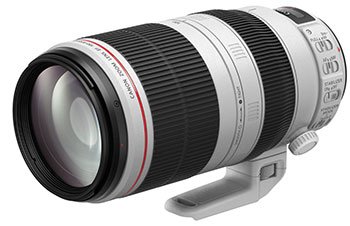
The equipment you need for plane spotting really depends on what kind of plane spotting you want to do.
If you are logging aircraft registrations, the basic information you need are some binoculars (a compact pair will do) and a notepad to write down the planes you see. You could also note them down on your phone.
A flight tracking app (see below) is also considered essential these days. They’re usually free, all you need is a smartphone.
If you’re into aircraft photography, you’ll need a camera with some kind of zoom lens (you’ll rarely be able to get close enough to aircraft with a standard lens).
This doesn’t need to be an expensive digital SLR camera. Something compact with a zoom will do. But down the line you may choose to upgrade to the best camera and lens you can afford.
That’s it! There are lots of other things you can get to help you (see below), but none are essential to start plane spotting.
Is plane spotting legal?
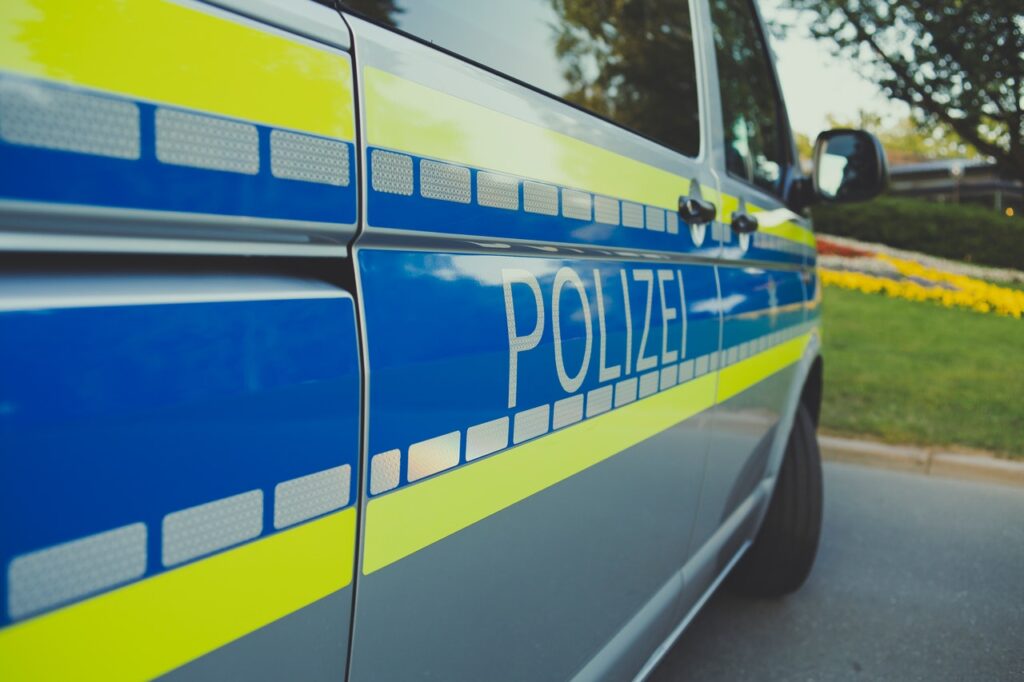
Yes, plane spotting is perfectly legal.
However, there are many countries in which plane spotting is considered a suspicious activity.
Also, given the number of terrorist incidents surrounding aviation in recent decades, plane spotters can often be viewed with suspicion by those who don’t understand the hobby, or by police and security patrolling airports.
Therefore, we always advise these few basic guidelines when plane spotting
- Do not trespass at airports or on private property, and never try to breach the security perimeter at an airport or airfield.
- Unless visiting an official spotting location, try to keep your use of binoculars and camera lenses to a minimum in areas where the public or security might consider you to be acting suspiciously (especially inside an airport terminal).
- If asked to move on, do it. Don’t argue with security, police or land owners, even if you think you’re in the right. Under terrorism laws you can be arrested if your plane spotting activity is considered suspicious.
- Be extra vigilant and restrained at military airfields, or in countries where war or terrorism are rife.
How to keep track of the aircraft you spot
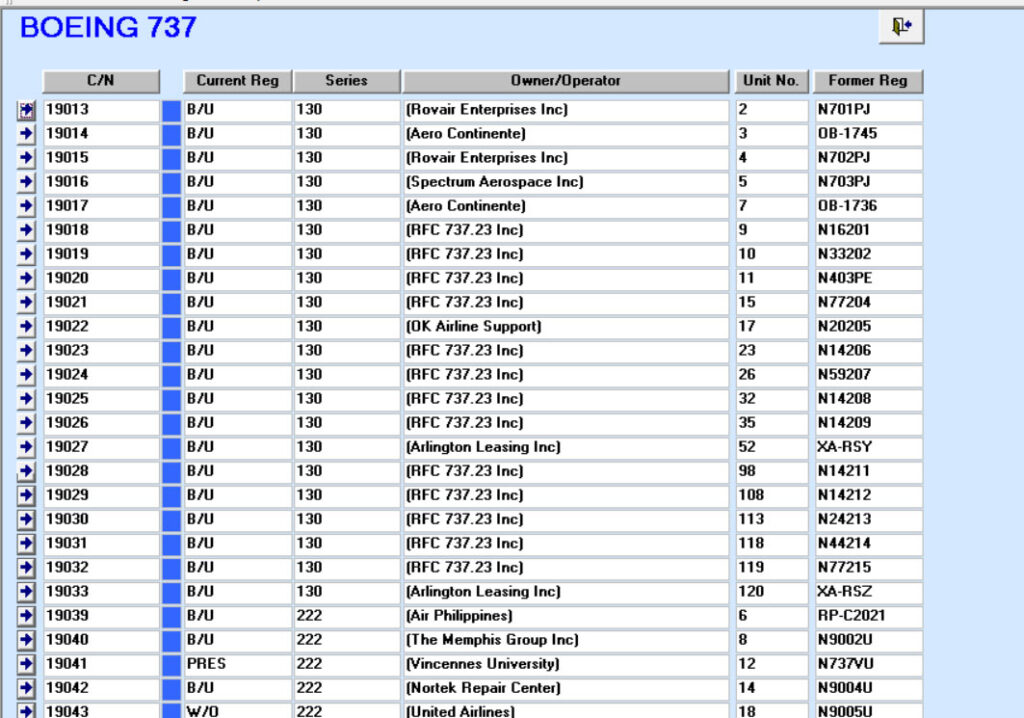
Noting down the planes you see in a notebook or on your phone is great for keeping track of the planes you see. But chances are you’ll want to keep better track of how many aircraft you’ve seen, and how many are left to see.
If you have a computer, you may wish to note down the planes you’ve seen in a spreadsheet or text document. Remember to back it up so that you never lose it!
To keep better track, you’ll want to get hold of a book which lists all aircraft registrations (they’re usually published each year with the latest information), or a database which keeps track of the planes you’ve seen.
How to take pictures of aircraft
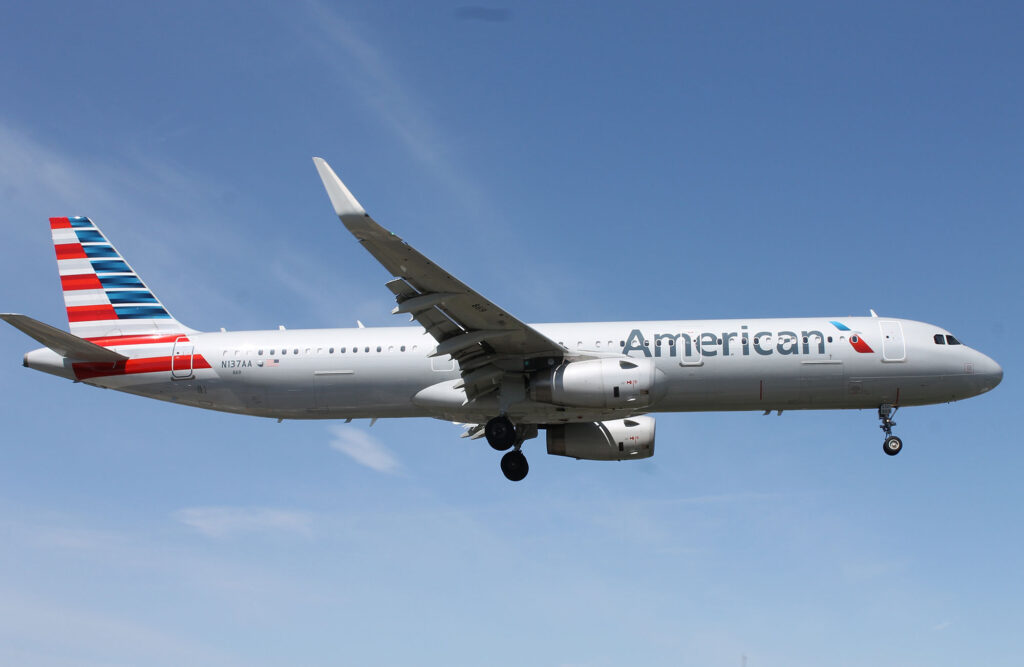
You don’t need to be a professional photographer to take pictures of aircraft. Most plane spotters just like to keep a record of the aircraft or the different airline colour schemes (known as liveries) that they’ve seen, and basic photography skills are good enough for that.
Try to aim for a side-on shot of the plane so that you can see the details of the colours, and its registration. Pictures of the underneath of aircraft, or from head-on, can be striking but don’t give much detail.
You should also try to take pictures in good light conditions, with the sun behind you so that the aircraft is lit up well.
As you get better at photography, or buy longer lenses, you will be able to experiment in the pictures of you take of aircraft. You can capture them in different positions, or different light conditions.
Where should I go plane spotting?
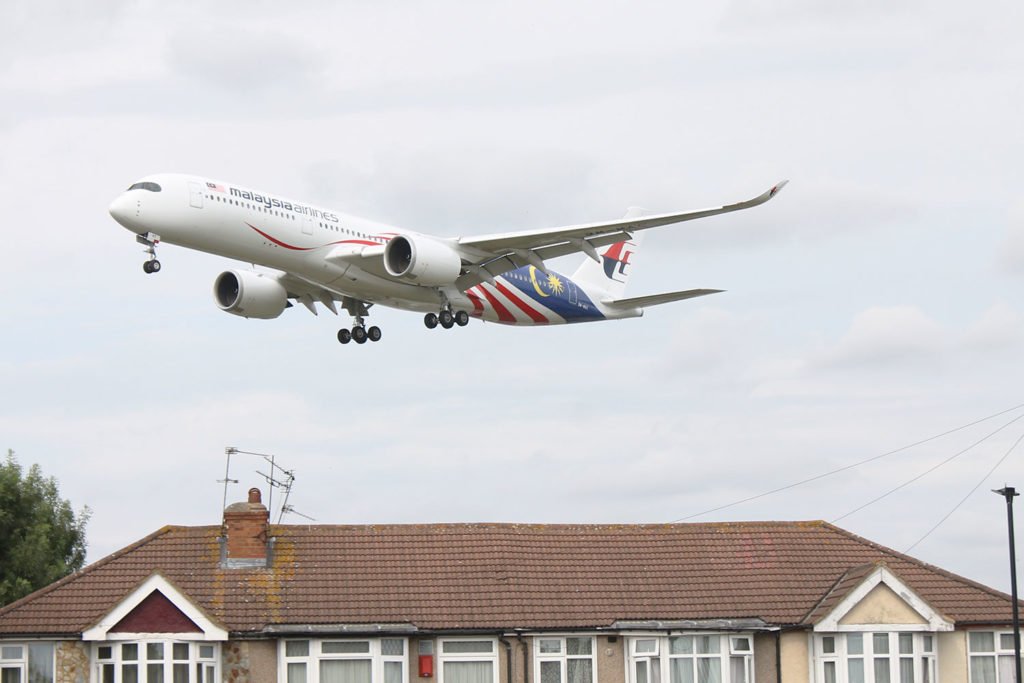
Spotting at Myrtle Avenue, Heathrow.
So, where should you go plane spotting?
The easiest place to start is at your nearest airport, if it’s not too far away. Another good place is if you’re going on holiday and will be travelling through an airport.
If you have an airport nearby, try to find out if it has any places to watch aircraft from. Go to Google and search for ‘Plane spotting at <your airport name>’ and see what comes up. Chances are there are people who have written some guides about plane spotting at your airport.
Once you’ve got the hang of things, you will want to visit some of the better known airports for spotting. But this might involve travelling, so you’ll need to plan how you’ll get there.
Hopefully there will be a busy airport within easy reach of where you live.
Some of the best airports for plane spotting include London Heathrow and Manchester in the UK, Los Angeles and Fort Lauderdale in the USA, Tokyo Haneda in Japan, Sydney in Australia, Frankfurt in Germany, Madrid in Spain, and Bangkok in Thailand.
But there are many more.
[Here’s our guide to Europe’s Top 20 Spotting Locations]
Do I have to go to an airport to plane spot?
No.
When I was young, to go plane spotting usually meant visiting one of my local airports and seeing which aircraft were there, or waiting around for some to turn up.
Occasionally you could plan ahead by finding some printed timetables and working out when the best time to visit the airport would be. But this wouldn’t guarantee the aircraft you wanted to see wasn’t running late.
Later you could check on the TV text service (remember Teletext?) which listed live arrivals at a number of airports, so you could check what was due and visit at the correct time.
Today, with the introduction of the internet and smartphones, it is really simple to see where (almost) every plane in the world is, what is due at various airports, and – incredibly usefully – the aircraft that are flying right over your head.
You may have seen those white trails behind aircraft high in the sky (known as contrails). Well, with apps and websites like Flightradar24, you can now look up exactly which aircraft that is (and note it down if you’re a registration spotter). No need to visit the airport any more!
What apps and software can help with plane spotting?
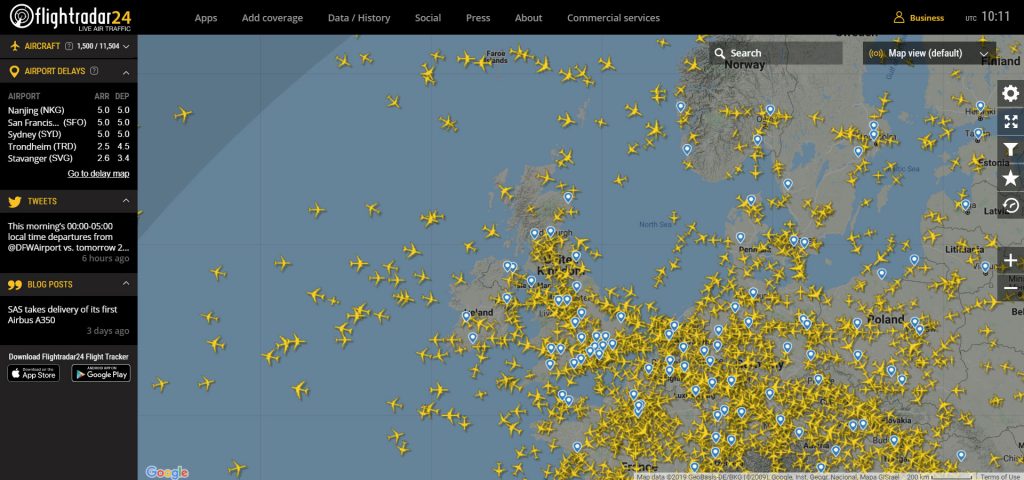
This brings me on to the apps and software which is available to plane spotters to help with their hobby.
Flight Tracking
There are a number of flight tracking websites and apps which help you identify the aircraft you see flying overhead, or in and our of airports. They’re useful for spotting from home. The best are:
Fightradar24
The original and most popular flight tracking site. Flightradar24 shows visual representations of aircraft all over the world, with details like the registration, aircraft type, airline, destination, altitude, speed and lots of other fun information.
It is available as a website (here), or a smartphone app (search for it on your app store).
ADSB Exchange
ADSB Exchange is a free website, again showing all the aircraft flying overhead and useful details like the registration, type, altitude and speed.
What’s good about this website is that it also shows military aircraft and their registrations (serials), which don’t usually show up on Flightradar24. So if you like to spot them, this is a useful site.
Databases
You can also get databases which list all the aircraft in the world. These usually install on your computer (but there are some web-based ones), and you can tick off aircraft as you see them, adding details like the date and location you saw them.
Some databases you could try are:
Aviation Databases Global
https://www.aviationdatabases.com/
SpottingLog (web based)
https://www.spottinglog.com/
Freebird Aviation Database (web based)
https://www.freebirddb.com/
ADU Software
https://www.adusoftware.co.uk/
I want to be a plane spotter. What next?
Great! You’ve made a good choice!
Hopefully you’re on your way to gaining some understanding and knowledge about aircraft, airlines and airports. But don’t worry, you can keep learning as you go.
The next step is to get out there and do it! Start using the websites and apps listed above.
If you want to log registrations, you’ll need to get hold of a book or database which lists them. I prefer databases, as they are kept up to date more regularly (sometimes weekly). But there are many great books out there, and it’s really nice to tick off aircraft and get a visual perspective on how many you’ve seen!
Further Resources for Plane Spotters
Hopefully this guide has given you a taste of how to get started as a plane spotter and you will go out and begin enjoying this amazing hobby.
But it is only a start.
Some further resources you may wish to look at to help you develop your plane spotting hobby are listed below:
Useful Websites for Plane Spotters
AirportSpotting.com – of course, the best for plane spotting news, guides, tips and resources. Bookmark us!
Airliners.net – one of the oldest and best websites for aircraft photographs. It also has a really active forum where other plane spotters and photographers hang out.
Planespotters.net – a useful site which has lots of information on airlines and their fleets, as well as news and photographs.
Spotterguide.net – Worldwide spotting locations database.
Useful Books for Plane Spotters
World Airports Spotting Guides – this is our own guide to the best airports around the world for spotting planes. It gives you tips on what you’ll see, and the best positions around the airport to spot from. In many cases there are maps to guide you.
Get your copy here: https://www.airportspotting.com/spotting-books/
We also publish a range of other spotting guide books to airports across Europe, Asia and the USA. Find out more about them all here: https://www.airportspotting.com/spotting-books/
Airport Spotting Hotels – when you go spotting or travelling, it’s useful to find a hotel with views of the airport so that you can continue spotting at night, or even get a grandstand view of the runway to take pictures from. Airport Spotting Hotels is a useful book to tell you the best hotels at airports around the world.
Civil Aircraft Markings – this is the book many plane spotters in the UK start with. It lists all the aircraft currently registered in the UK, plus many international airliners. You have the registration, aircraft type, and operator, and a tick box for when you’ve seen it. Updated every year, here’s the latest version:
World Airline Registrations – for a more detailed list of the world’s airliners, with registrations, type, and tick box for spotting, this is a great book, also published each year.
BizQR – Biz Jets Quick Reference. Like the airliner listing books, this book has the current year’s list of biz jets to tick off.
Useful Equipment for Plane Spotters

The basic equipment you need to be a plane spotter is:
- Notepad & Pen
- Binoculars
- Smartphone or Tablet with relevant apps
- Camera and Telephoto Lens – if you plan to take photos of aircraft.
Conclusion
So that’s it. I hope this has given you some insight into being a plane spotter, and tips on how you can take the plunge and become a plane spotter yourself.
If you have an interest in aircraft, this is a great hobby to pursue. It can lead to some amazing experiences, and the chance to travel the world in pursuit of your interest.
Remember to always obey the rules. Hanging around airports often leads to suspicion, so you should always be polite and courteous, obeying security and police officers if they ask questions or urge you to move on.
You should never trespass or ignore warnings in order to go plane spotting or take pictures of aircraft. The rules differ from country to country and you could end up in serious trouble if you break them.
But always have fun, enjoy yourself and keep spotting!





